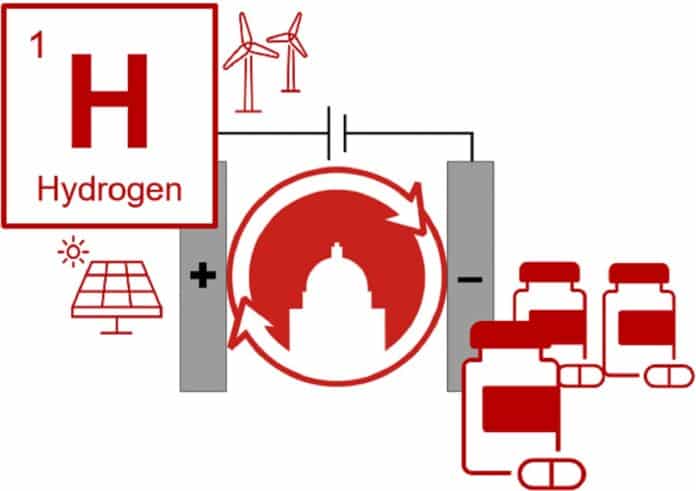The world requires greener methods of producing chemicals. In a new study, researchers at the University of Wisconsin-Madison show one potential approach toward this aim by adapting hydrogen fuel cell technologies. These technologies are already being used to power electric cars, laptop computers, and mobile phones.
Hydrogen gas is an ideal solution since it can be created from renewable electricity and produces very little waste. The development of a hydrogen-based method of producing drugs aligns with growing interest in a “hydrogen economy.”
Researchers took inspiration from hydrogen fuel cells, which generate electricity by using hydrogen gas as a source of electrons.
Shannon Stahl, a professor in the UW–Madison Department of Chemistry who guided much of the research, said, “The chemical industry is a massive energy consumer, and there is a big push to decarbonize the industry. Renewable electricity can provide energy to produce chemicals with a much lower carbon footprint than burning fossil fuels.”
The conventional procedure requires enormous amounts of zinc metal as an electron source. However, processing zinc is complex and produces large volumes of environmentally unfriendly waste. Researchers at the University of Wisconsin-Madison worked with Merck & Co. Inc. to create a more sustainable technique for producing chemicals to make many different types of drugs.
Stahl said, “The process we are working with needs a green source of electrons. We realized that fuel cell technology could be modified to make chemicals rather than electricity.”
Researchers developed a system that pulls electrons away from hydrogen, which works well without water, using an organic compound called quinone. A fuel cell needs water to operate correctly, but water can interfere with the steps to make the drug ingredients. The system then supercharges the electrons with electricity, providing them with more energy than hydrogen could usually provide.
Mathew Johnson, a postdoctoral researcher in the chemistry department who led the study, said, “This work is connected to a broader effort to create a hydrogen infrastructure that goes beyond fuel cells and energy production. This work shows that hydrogen can be combined with electricity to make new drugs.”
The team is now working to improve the method to be used on a larger scale.
Johnson said, “This is a broadly applicable technology for chemical production. Many chemical processes need electrons. This is not limited to pharmaceuticals. It should be a very versatile technology.”
The U.S. Department of Energy funded the study.
Journal Reference:
- Jack Twilton, Mathew R. Johnson, et al.Quinone-mediated hydrogen anode for non-aqueous reductive electrosynthesis. Nature. DOI: 10.1038/s41586-023-06534-2
